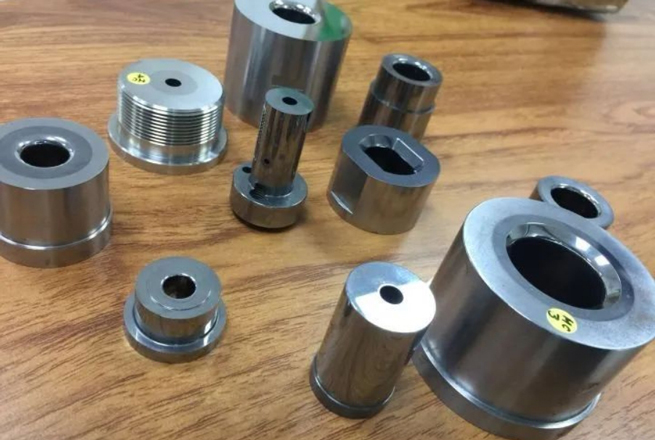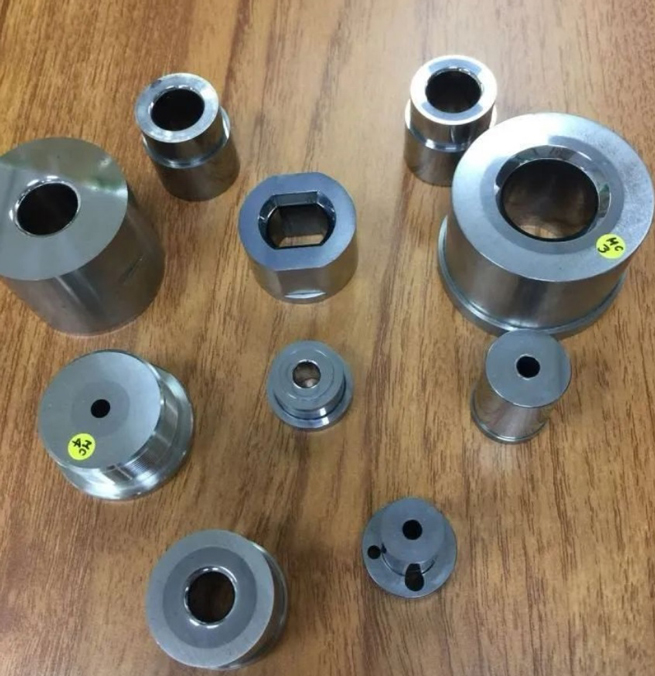
It is common to see Japanese customers purchasing high-speed steel materials for punch parts/Stamping die parts, and requiring deep cooling treatment? Since its inception in 1990, high-speed steel has been known for manufacturing metal cutting tools. With the rapid development of science and technology, the application scope of high-speed steel has been continuously expanding. Since the 1960s, Japan has been focusing on the automotive and bicycle industries and has successfully tried using high-speed steel as molds. Currently, about 15% of the high-speed steel produced is used for mold manufacturing.
High speed steel is mainly used to manufacture cold extrusion molds and cold pier pressing molds, especially Mo series high-speed steel has superior toughness compared to W series high-speed steel. The main process difficulty of using high-speed steel for molds lies in mastering heat treatment technology. After high-temperature quenching, it is necessary to temper three times within one hardening range to obtain high hardness and thermal hardening. The main disadvantage is insufficient hardness in certain places. In order to improve the strength and toughness of molds, the traditional quenching and tempering process of high-speed steel has also undergone changes in recent years.
(1) Punch: The high-speed steel punch used by automobile factories can only be used 100000 times without deep cooling treatment, while using liquid nitrogen after -196 × After 4 hours of cryogenic treatment and 400 tempering, the service life has been increased to 1.3 million times.
(2) Stamping die: The production and use results show that the yield increases by more than twice after deep cooling treatment.
(3) Silicon steel sheet cold stamping die: In order to reduce the brittleness and internal stress of the die after deep cold treatment, combining deep cold treatment with medium temperature tempering can improve the die's resistance to damage and other comprehensive properties. The blade grinding life of the die is increased by more than three times and stabilized at 570000 strokes.

The purpose of cold treatment for high-speed steel is to cool the quenched steel parts to below zero (usually -60-70), transforming the residual austenite in the steel into martensite. In the past, high-speed steel cold treatment was mainly used in industry to shorten the production cycle of heat treatment, that is, quenching+cold treatment+one tempering was used instead of the treatment method, that is, quenching parts were treated between -100 and 196 (liquid nitrogen), and then tempered once at 400, without the need for the original 23 repeated tempering. After deep cooling treatment, the hardness and wear resistance of the parts are further improved, and the wear resistance can be increased by 40%. This not only shortens the tempering time, saves energy, but also significantly improves the service life of the mold. Since the 1970s, research on cryogenic treatment has been highly effective both domestically and internationally. Countries such as the former Soviet Union, the United States, and Japan have successfully utilized cryogenic treatment to improve the service life of molds, wear resistance of workpieces, and dimensional stability.

During the cryogenic treatment of high-speed steel, due to the precipitation of residual austenite into martensite and ultrafine carbides, the hardness, wear resistance, impact toughness, and red hardness are improved. During the cryogenic treatment of high-speed steel, ultrafine carbide particles are uniformly distributed on the martensitic matrix, weakening the catalytic effect of grain boundaries. The refinement of the matrix structure not only weakens the degree of impurity element segregation at grain boundaries, but also plays a role in strengthening grain boundaries, thereby improving the performance of high-speed steel, significantly improving hardness, impact toughness, and wear resistance. If the hardness of the mold is high, its wear resistance is also good. For example, if the hardness is increased from 60HRC to 62-63HRC, the wear resistance of the mold will increase by 30% to 40%.
As a new process of cryogenic treatment applied in the heat treatment of high-speed mold steel, it can significantly improve the service life of the mold and has great practical value
